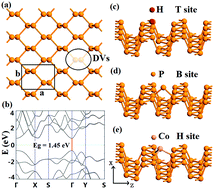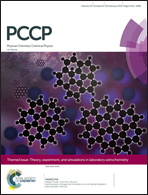Enhancement of tunneling current in phosphorene tunnel field effect transistors by surface defects†
Abstract
The effects of the staggered double vacancies, hydrogen (H), 3d transition metals, for example cobalt, and semiconductor covalent atoms, for example, germanium, nitrogen, phosphorus (P) and silicon adsorption on the transport properties of monolayer phosphorene were studied using density functional theory and non-equilibrium Green's function formalism. It was observed that the performance of the phosphorene tunnel field effect transistors (TFETs) with an 8.8 nm scaling channel length could be improved most effectively, if the adatoms or vacancies were introduced at the source channel interface. For H and P doped devices, the upper limit of on-state currents of phosphorene TFETs were able to be quickly increased to 2465 μA μm−1 and 1652 μA μm−1, respectively, which not only outperformed the pristine sample, but also met the requirements for high performance logic applications for the next decade in the International Technology Roadmap for Semiconductors (ITRS). It was proved that the defect-induced band gap states make the effective tunneling path between the conduction band (CB) and valence band (VB) much shorter, so that the carriers can be injected easily from the left electrode, then transfer to the channel. In this regard, the tunneling properties of phosphorene TFETs can be manipulated using surface defects. In addition, the effects of spin polarization on the transport properties of doped phosphorene TFETs were also rigorously considered, H and P doped TFETs could achieve a high ON current of 1795 μA μm−1 and 1368 μA μm−1, respectively, which is closer to realistic nanodevices.



 Please wait while we load your content...
Please wait while we load your content...